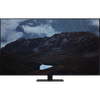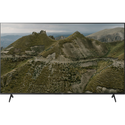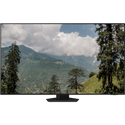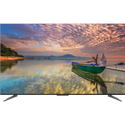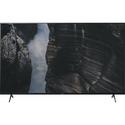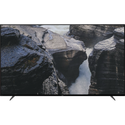A comparison of specs, key information, reviews, and best pricing from top retailers
Last updated -- hours ago | Report incorrect information
What we think

The PerfectRec TV team Learn more
Updated January 16, 2024·
If you want to save money, the Samsung Q80B is a solid option, especially for general TV viewing, but it doesn’t perform as well in bright rooms. If you’re willing to invest more for a superior picture quality and better viewing experiences, especially for movies and HDR content, the Hisense UX is a great choice, though it will cost significantly more. Give Feedback
this description is based on the product variant with some specs and product variant with some specs. At the time of writing, the variant with some specs cost some dollars and the variant with some specs cost some dollars.
Advantages of the Hisense UX (LCD)
- Best in class for bright room
- Very good for dark room
- Very good for movies & TV
- Very good for news, talk, & other TV
- Excellent for cartoons & animation
- Very good for use as monitor
- Very good reflections
Advantages of the Samsung Q80B (LCD)
- Very good motion processing
Key differences
Picture Quality
8.8


7.1
8.00/10
CONTRAST
5.33/10
10.0/10
COLOR VOLUME SCORE
7.5/10
miniLED FALD
PANEL TYPE
LED FALD
VA
PANEL SUB-TYPE
IPS
The Hisense UX (LCD) has very good picture quality, while the Samsung Q80B (LCD) has good picture quality.
Movies & TV
8.5


6.4
8.00/10
CONTRAST
5.33/10
10.0/10
BLACK UNIFORMITY
5.2/10
7.0/10
UPSCALING
7.5/10
Yes
HDR10 SUPPORT
Yes
Yes
HDR10+ SUPPORT
Yes
Yes
DOLBY VISION SUPPORT
No
The Hisense UX (LCD) is very good for movies & TV, while the Samsung Q80B (LCD) is only fair.
The Hisense UX provides a higher contrast, superior local dimming, and outstanding black uniformity, all of which are crucial for a deep and immersive movie experience, especially in dark scenes. In comparison, the Samsung Q80B shows less impressive performance in these areas, particularly with its lower contrast and black uniformity, which can result in less detailed dark scenes and a less cinematic feel.
Cartoons & Animation
9.0


7.6
8.6/10
COLOR GAMUT SCORE
7.3/10
10.0/10
COLOR VOLUME SCORE
7.5/10
10.0/10
SDR BRIGHTNESS SCORE
8.8/10
7.7/10
COLORS OUT OF THE BOX SCORE
7.8/10
6.8/10
GRAY UNIFORMITY
6.4/10
The Hisense UX (LCD) is excellent for cartoons & animation, while the Samsung Q80B (LCD) is good.
The Hisense UX excels in displaying cartoons and animation because it offers superior colors straight out of the box and encompasses a wider color gamut, which is crucial for vibrant and diverse color reproduction. In comparison, while the Samsung Q80B also performs well, it has less accurate colors initially and a slightly narrower color gamut, which may not render the full spectrum of colors in animations as richly as the Hisense UX.
News, Talk, & Other TV
8.6


7.8
10.0/10
SDR BRIGHTNESS SCORE
8.8/10
7.0/10
UPSCALING
7.5/10
The Hisense UX (LCD) is very good for news, talk, & other TV, while the Samsung Q80B (LCD) is good.
The Hisense UX performs better in upscaling lower resolution content and has a higher SDR brightness, making it ideal for watching news and TV shows in various lighting conditions. The Samsung Q80B also has good upscaling and SDR brightness, but with slightly less effectiveness, yet still offers a good viewing experience for news and standard programming.
Bright Room
10.0


7.4
7.0/10
VIEWING ANGLE
7.4/10
10.0/10
SDR BRIGHTNESS SCORE
8.8/10
10.0/10
HDR BRIGHTNESS SCORE
7.7/10
8.9/10
REFLECTIONS SCORE
6.0/10
The Hisense UX (LCD) is best in class for bright room, while the Samsung Q80B (LCD) is good.
The Hisense UX excels in a bright room due to its superior SDR and HDR brightness, and very good reflection handling, which outshine the Samsung Q80B's brightness levels and fair reflection performance. While the Samsung Q80B offers good contrast and color performance, the Hisense UX's exceptional contrast and color volume make it better suited for bright settings and diverse content viewing.
Cost
$2,498


$998
$500
$1,000
$1,500
$2,000
$2,500
$3,000
$3,500
$4,000
The Hisense UX (LCD) has a price of $2,498 and the Samsung Q80B (LCD) costs $998.

Let Us Help Find Your Perfect TV
Find your new TV
Key similarities
Sports
6.6


6.8
4.2/10
MOTION PROCESSING
8.0/10
120Hz
REFRESH RATE
120Hz
7.0/10
INPUT LAG SCORE
10.0/10
7.0/10
UPSCALING
7.5/10
10.0/10
SDR BRIGHTNESS SCORE
8.8/10
Yes
HLG SUPPORT
Yes
The Samsung Q80B (LCD) and Hisense UX (LCD) are both only fair for sports.
The Hisense UX handles reflections better and has slightly worse motion processing compared to the Samsung Q80B, making the Hisense better for bright rooms but not as smooth for fast-moving sports scenes. Both TVs have comparable viewing angles, which is important for group watching, and their gray uniformity is similar, meaning neither will have a significant advantage in displaying a uniform field like a sports field without irregularities.
Gaming
8.4


8.2
8.4/10
RESPONSE TIME SCORE
8.1/10
7.0/10
INPUT LAG SCORE
10.0/10
4.2/10
MOTION PROCESSING
8.0/10
90.0/100
GAMING LOCAL DIMMING
60.0/100
10.0/10
GAME HDR BRIGHTNESS SCORE
8.0/10
The Hisense UX (LCD) and Samsung Q80B (LCD) are both very good for gaming.
The Hisense UX is well-suited for gaming with its good response time and excellent input lag performance, while the Samsung Q80B also provides a strong gaming experience with its very good response time and good input lag, both featuring a 120Hz refresh rate ensuring smooth gameplay.
Give feedback
We’re constantly working to improve.
How the Hisense UX (LCD) and the Samsung Q80B (LCD) compare to other TVs
Spec Comparison
| Hisense UX (LCD) | Samsung Q80B (LCD) |
GENERAL | |||
|---|---|---|---|
| Price | |||
$2,498 | $998 | ||
Brand | |||
Brand | Hisense | Samsung | |
Release Date | |||
Release Date | September 1, 2023 | April 3, 2022 | |
Full name | |||
Full name | 85UX | QN65Q80B | |
Screen Size | |||
Screen Size | 85" | 65" | |
Screen Resolution | |||
Screen Resolution | 4K | 4K | |
TV FEATURES | |||
|---|---|---|---|
Operating System | |||
Operating System | Google TV | Tizen | |
Sound Quality Score | |||
Sound Quality Score | 8/10 | 8.6/10 | |
NextGen Ready | |||
NextGen Ready | Yes | No | |
HDMI Ports | |||
HDMI Ports | 4 | 4 | |
Coax Ports | |||
Coax Ports | 1 | 1 | |
DISPLAY QUALITY SCORES | |||
|---|---|---|---|
Picture Quality Score | |||
Picture Quality Score | 8.9/10 | 7.1/10 | |
Bright Room Score | |||
Bright Room Score | 10/10 | 7.5/10 | |
Gaming Score | |||
Gaming Score | 8.4/10 | 8.3/10 | |
Movies & TV Score | |||
Movies & TV Score | 8.6/10 | 6.5/10 | |
Sports Score | |||
Sports Score | 6.6/10 | 6.9/10 | |
PHYSICAL | |||
|---|---|---|---|
Dimensions w/o Stand (H x W x D) | |||
Dimensions w/o Stand (H x W x D) | 43.1" x 76.7" x 1.7" | 32.7" x 56.9" x 2.2" | |
Dimensions with Stand (H x W) | |||
Dimensions with Stand (H x W) | 45.5" x 76.7" | 35.7" x 56.9" | |
Weight without Stand | |||
Weight without Stand | 111.9 lbs | 53.1 lbs | |
VESA Mount | |||
VESA Mount | 600 x 400 | 400 x 300 | |
DISPLAY | |||
|---|---|---|---|
Color Depth | |||
Color Depth | 10 bit | 10 bit | |
Black Frame Insertion | |||
Black Frame Insertion | Yes | Yes | |
Auto Low Latency Mode | |||
Auto Low Latency Mode | Yes | Yes | |
Contrast | |||
Contrast | 8/10 | 5.3/10 | |
Local Dimming | |||
Local Dimming | 8.4/10 | 5.7/10 | |
SOUND | |||
|---|---|---|---|
Speaker Setup | |||
Speaker Setup | 4.1.2 | 2.2.2 | |
Speaker Power | |||
Speaker Power | 82 W | 60 W | |
Dolby Atmos | |||
Dolby Atmos | Yes | Bypass only | |
DTS:X | |||
DTS:X | Up to DTS Digital Surround, Bypass only | No | |
Shopping
Hisense UX (LCD)
See more
Dig into reviews and images
Tom's guide
Matthew Murray | November 2023
"If you need a TV that can light up the room literally as well as figuratively, look no further than the Hisense UX"
Samsung Q80B (LCD)
See more
Dig into reviews and images
Tom's guide
Matthew Murray | February 2023
"For most people its picture, sound, and price make it a midrange TV worth considering. HDR brightness was generally exceptional. Its viewing angles are shockingly good, among the very best we’ve seen recently from any non-OLED TV. For gamers input lag isn’t too shabby."
Get a great deal on the Hisense UX (LCD) or the Samsung Q80B (LCD)
About Hisense
Hisense, a Chinese TV manufacturer, entered the US market in approximately 2011 and has since acquired TV divisions from various companies such as Toshiba, Sharp, Hitachi, and NEC. Currently ranking as the fourth largest vendor in terms of sales volume, Hisense aims to capture a wide range of TV budget segments. They offer exceptional value with TVs that often outperform their competitors at similar price points, making them a compelling choice for consumers. In the US, they use Google TV as their smart TV software which provides the largest app selection and a very modern user interface, however it is not as user friendly as the software from other vendors.
About Samsung
Samsung, a South Korean electronics manufacturer, holds the title of being the largest global TV vendor in terms of units sold. They offer a diverse lineup of TV products that cater to various budget ranges. A notable achievement in recent years is the development of Quantum Dots, a technology that enhances color reproduction, resulting in richer and more vibrant hues. Samsung TVs are well-regarded for their high manufacturing quality and user-friendly software, making them an excellent choice for consumers seeking an intuitive viewing experience.
Give feedback
We're constantly perfecting our model
TV guides you might be interested in
More comparisons for you
FAQs
FAQs about TVs
Why trust us
This information was produced and vetted by the PerfectRec TVs team. We are a product research and recommendation organization that meticulously reviews and evaluates the latest TV information and makes it digestible for you.
By the numbers
385
TVs evaluated
33,110
TVs stats compiled
21
Proprietary TVs ratings developed
156,330
Recommendations made
23,450
Consumer hours saved
About the TV team
Joe Golden, Ph.D
CEO and TVs Editor
Joe is an entrepreneur and lifelong electronics enthusiast with a Ph.D in Economics from the University of Michigan.
Jason Lew
Staff Expert & Software Engineer
Jason is a staff expert and software engineer that has been making laptop recommendations for 7 years and moderates one of the largest laptop subreddits.
Chandradeep Chowdhury
Staff Expert & Software Engineer
Chandradeep is a staff expert and software engineer and expert in televisions and monitors. He’s been making monitor recommendations for ten years.
Jaime Roldán
TVs Expert
Jaime is a Colombia-based TV expert. He is an electronics engineer with 8 years of experience in the telecom sector and has been making TV recommendations for 12 years.

